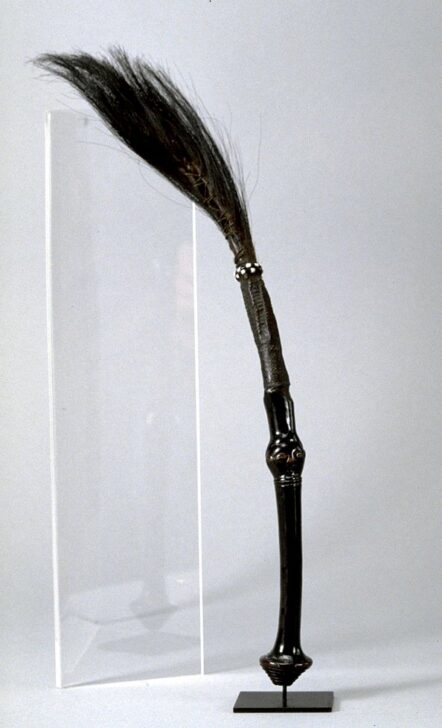Flywhisk
Kuba

Description
Flywhisks, although practical objects, are used primarily as ensignia of rank and prestige in Africa.
Subject Matter:
Flyshisks were typically used as insignia to show prestige and eldership. They often served as extensions and amplifications of the ruler's ability to gesture, direct court activities, and focus the court's attention on himself. This flywhisk has a human face carved into the staff. Figural sculptures are rare, and frequently designed with ornate hairstyles often worn by titled Kuba officials. The face on this flywhisk could also be a potential representation of a particular king.
References:
Suzanne Blier, The Royal Arts of Africa, 1998
Jan Vansina, The Children of Woot, 1978
Physical Description:
Wooden circular staff with a circular human face in the middle of the shaft. The bottom of the staff contains concentric rings that form a point at the base. The top of the staff has a black and white checkered pattern that wraps around the staff. Animal hairs stick out the top of the staff.
Usage Rights:
If you are interested in using an image for a publication, please visit https://umma.umich.edu/request-image/ for more information and to fill out the online Image Rights and Reproductions Request Form.